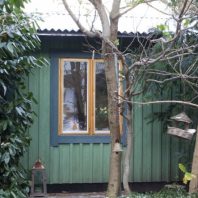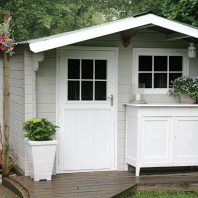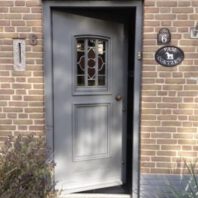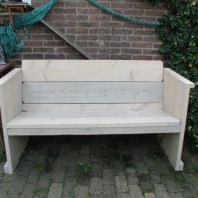Swedish red paint | Falu red | The original Swedish wood paint
Swedish red, also known as Falu red, has been a consistent symbol for Sweden. This typical color has been used for centuries on the wooden houses in the many natural areas in this beautiful country. Moose Färg brings the original Falu Red to Europe, complete with all its unique properties. This completely matt paint is made as much as possible from natural, renewable raw materials and colored by earth pigments. A wood paint that not only colors your wood so characteristically, but lets it breathe and optimally protects it.
Read all about the original color, the history and the Swedish red paints on this page. You can also order Swedish red paint directly:
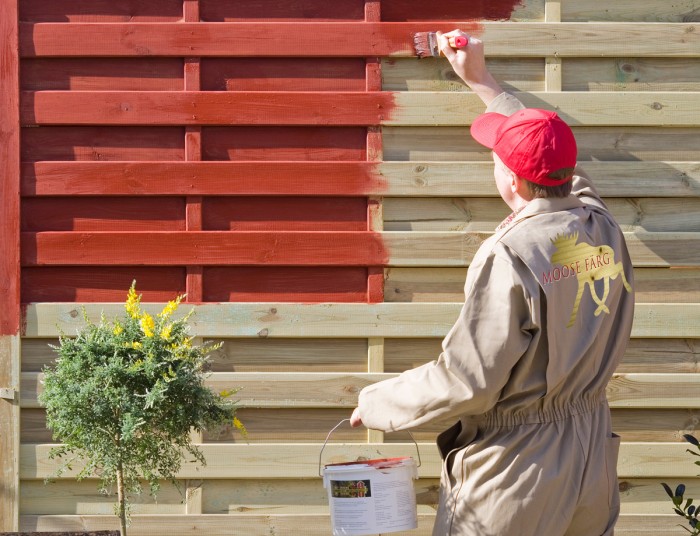
What’s the origin of the Swedish red color?
This characteristic paint gets its color from the earth pigments that come from the mines in Sweden. It is actually a by-product of copper ore mining. This releases iron hydroxide, which originally has a yellow color. When this iron hydroxide oxidizes it gets the typical red color. Swedish red is actually iron oxide, or: rust! This gives a very unique, special red color.
Swedish red is a completely matte, living color. With different types of light it looks slightly different, an effect that’s also called metamery. In humid weather and low light it is almost dark red, while in the sun the orange comes out better. This is due to the earth pigment, which has a very special effect.
The falurödfärg in Sweden contains lead and is therefore strictly monitored in the EU. Moose Färg’s imports Falu Röd from Sweden, guaranteed without heavy metals and completely lead-free.
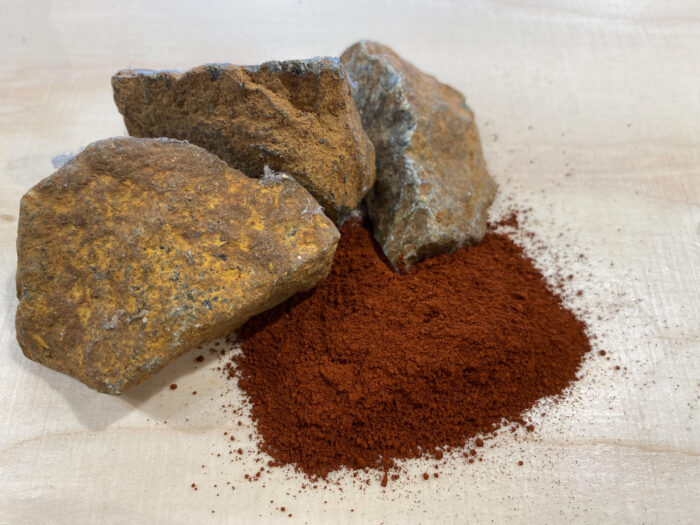
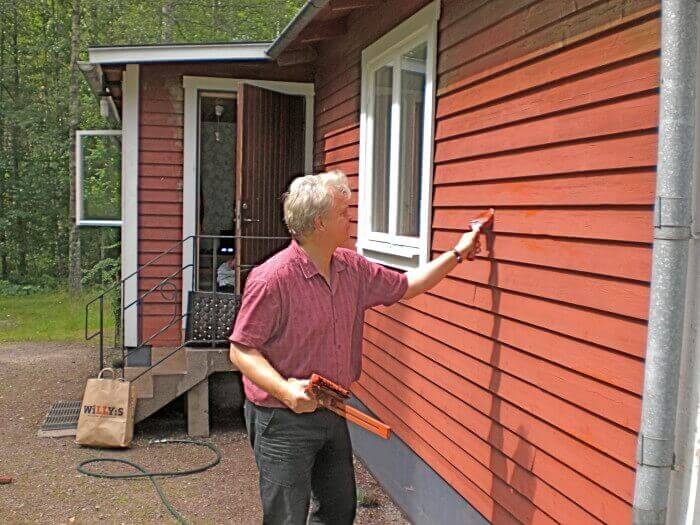
An age-old recipe turned into a modern paint
The age-old recipe of Swedish paint was improved and is well suited to our current standards in sustainability, environmental friendliness and ease of use. The paint is mainly used to provide wooden fences, facades, homes, fences and barns with a beautiful red color.
In Sweden, many people still make their own paint or varnish for wood. Paint is an important subject in the pub as everyone has a wooden house and therefore has experience with paints.
Moose Färg has 4 types of paint in the color Swedish red. The paint types all have their own applicability.
Moose S: for rough, untreated wood
Moose S is most comparable to the ancient slamfärg or cooking paint. An age-old recipe and with a traditional preparation method, consisting of natural and renewable raw materials, such as boiled linseed oil, wheat and rye flour. And those unique Swedish red earth pigments of course. The paint absorbs into the wood and is vapor permeable so that the wood can continue to breathe.
This paint is only suitable for completely untreated, raw wood and is available in the original colors Swedish red (Falu Röd) and deep black (Vasa Svart). So only choose Moose S if your wood is rough sawn and has not been previously painted, impregnated or otherwise processed.
Moose F: for all types of wood
Moose F is an age-old color of paint, made suitable for the present. This paint looks like Moose S, but is also suitable for planed or impregnated wood and already painted surfaces.
Moose F is the ideal choice for painting a wooden facade, garden house, garden fence, shed or panelling. It is suitable for all types of wood, e.g. spruce, pine, Douglas fir, red cedar, larch and hardwood. It can also be applied to impregnated wood or wood that has been previously stained or painted. Make sure you do pre-treat the wood where necessary.
Moose RDM: for hardwood doors and frames
If you want the original matt Swedish red paint on your window frames, interior furniture or door, it is best to opt for Moose RDM. This high-solid paint is also water-based, but contains more solid matter and is therefore less sensitive to signs of use. It is the only completely matt window frame paint available in the Netherlands.
Moose RDM is only suitable for surfaces that are dimensionally stable – that is, they do not shrink and expand or change shape – such as hardwood frames, doors and interior furniture.
Dimma: half-transparent color
Dimma means ‘haze’ in Swedish, and that’s exactly what this semi-transparent paint does to your wood. The color is not completely opaque, so you can still partly see the wood color. We mainly know this type of paint as white wash, but it is also possible to order a Swedish red wash.
-
Dimma wash semi-transparent€102,95
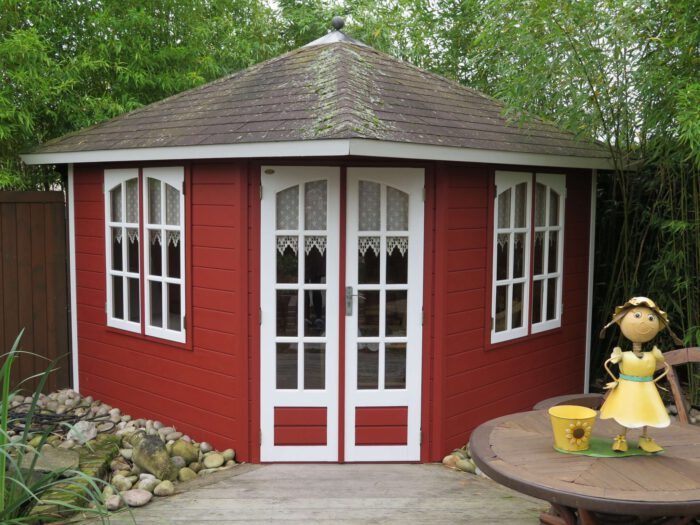
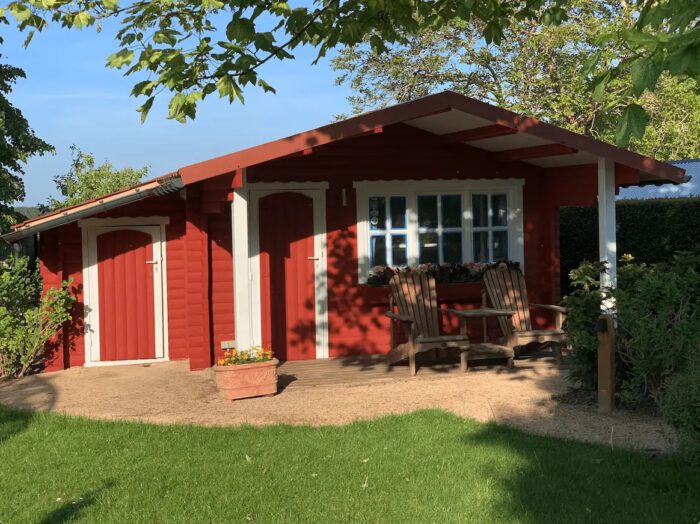
Which RAL-color is Swedish red?
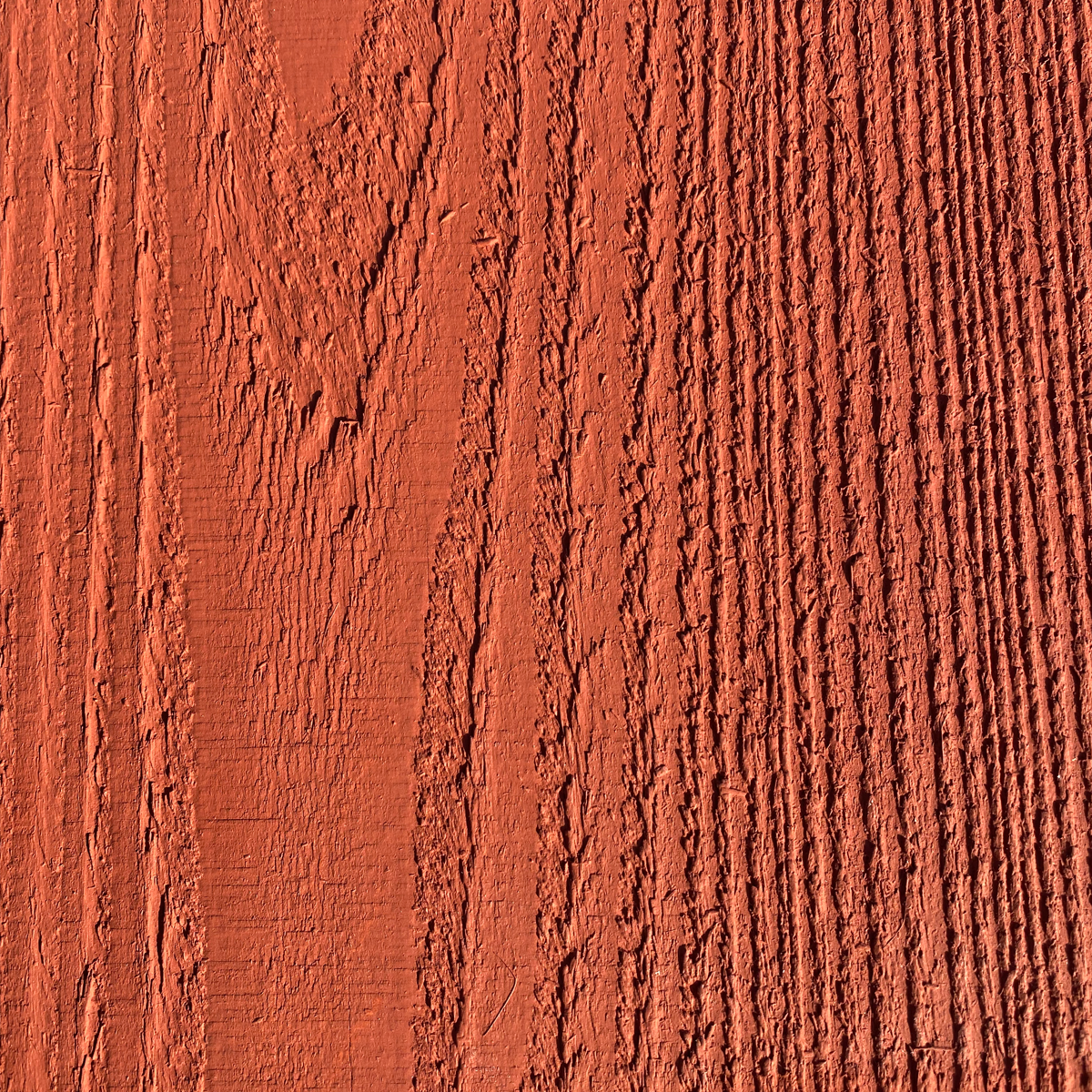
The real Swedish red cannot be described in a RAL color code. The original Falu red color is based on earth pigments and Ral-system is not. It is sometimes said that Ral 3011 (Brown Red) most closely resembles Swedish red, but if you see the colors side by side, you will still see a color difference. Earth pigments are not only unique in colour, but also very colourfast. This means that they do not or hardly discolour under the influence of sunlight. Synthetic pigments do.
This also has to do with the Swedish way of producing paint. The recipe, consisting of linseed oil, earth pigment, wheat flour and water, gives a totally matte, powdery paint. This paint absorbs into the wood, allowing the wood to breathe and the wood grains to remain visible. All these properties provide a unique, metameric color appearance. Metamer means that the color looks different in different daylight: then slightly browner, then redder again and then again close to orange. This effect is cannot be achieved with a satin or full gloss paint.
Want to order the original Swedish red paint?
Choose one of our types of paint in the color Falu Röd:
The benefits of Moose Färg
The Swedish paint is a joy to work with. Moose Färg’s paint comes in the very original color of Swedish red. This is of course completely lead-free. In addition to the Swedish slamfärg for raw, untreated wood, we also offer a paint type that is suitable for repainting planed and already painted wood and a paint type for hardwood frames.
The paint is mainly used to provide wooden fences, facades, homes, fences and barns with a beautiful red color.
- Swedish wood paint can be applied directly to the surface and ensures that the beautiful structure of the wood is preserved.
- The paint is easy to apply, it spreads like yogurt.
- The paint is sustainable and environmentally friendly.
- The wood can continue to breathe. The quality of the wood is therefore guaranteed.
- Due to the matte color, light scattering also takes place, making it appear as if it has a different color at different angles of light.
- You do not need to sand during maintenance, you can simply clean and brush over.
- The paint does not peel – if applied properly of course!
For the enthusiast: the history of Swedish red paint
The existence of this red earth color was first mentioned 1255. Sweden used to have a copper mine, which at one point in history was the largest copper mine in Europe and the economic anchor of the Swedish kingdom. It made the country very rich and enabled it to expand the Swedish kingdom. At its peak, the mine covered 2/3rd of Europe’s copper needs.
Iron hydroxide was a by-product of copper ore mining in Falun. This originally has a yellow color; but turns red as soon as it oxidizes (due to exposure to sunlight). If you burn the pigment, it turns black.
In Sweden, it became common practice to process this red pigment in paint, hence the name Swedish red or Falun red. At that time people wanted to color the houses red because it most closely resembled the brick houses on “the continent”, the rest of Europe.
From status symbol to common good
In the 16th century, King Johan III of Sweden makes Swedish red compulsory in Sweden. It might be good to mention that he was partly owner of the mines. At first this only happened to the wealthy owners of beautiful houses and it really became a kind of status symbol if they had painted their house in Swedish red.
Around the 18th century, the less fortunate in Sweden also started using this color for painting their houses. The cost of this paint went down considerably by then because the mine began producing the paint on an industrial scale.
The richer people then decided to paint their house a different color, for example white. This way, other colors where added to the color palet. The typical green (the colour of copper oxide) and blue (presumably derived from the so-called Berlin blue) are still very popular.
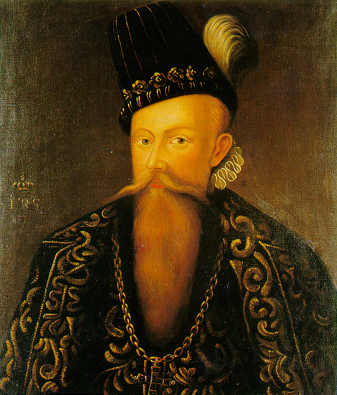
Not just in Sweden
Today, Falun Red remains popular due to its strong preservative effect on timber – and became the hallmark of the Swedish landscape. However, it can be found throughout Northern Europe, including the Baltic Sea. These areas were once also under the same kingdom, under the house of Wasa.
The name of the original paint in Sweden is slamfärg. Slam is originally a German word (‘schlamm’) and just means minedust, or mud. From my own experience, I know that the red colour is very comparable in Finland, where it is called puunamaali (red paint) or puunamulta (red mud).
Note: In Sweden, red lead-containing paint is still being marketed at the very edge of the EU rules. It is expected that with the revision of the REACH directives, it may no longer be sold or used (just like e.g. carobolinum). Watch out for this.
Falu red in pictures:
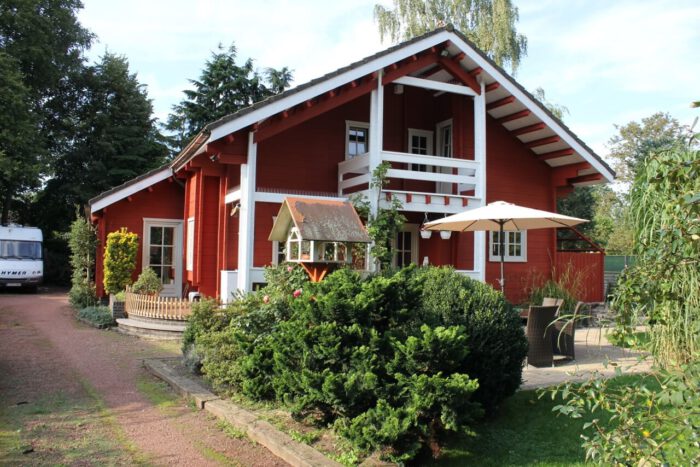
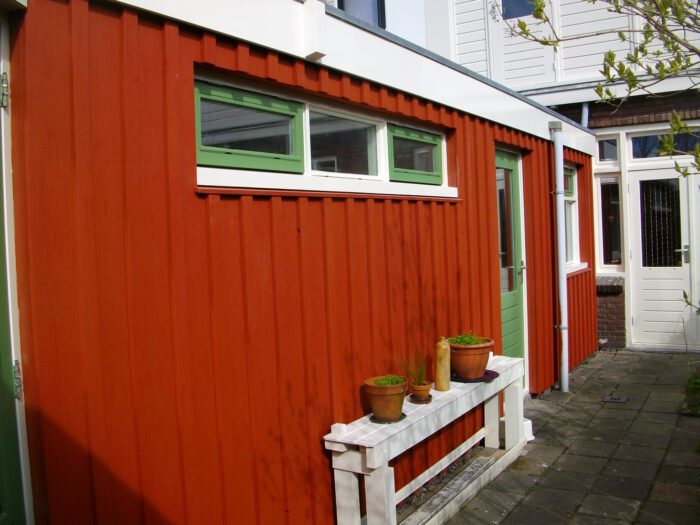

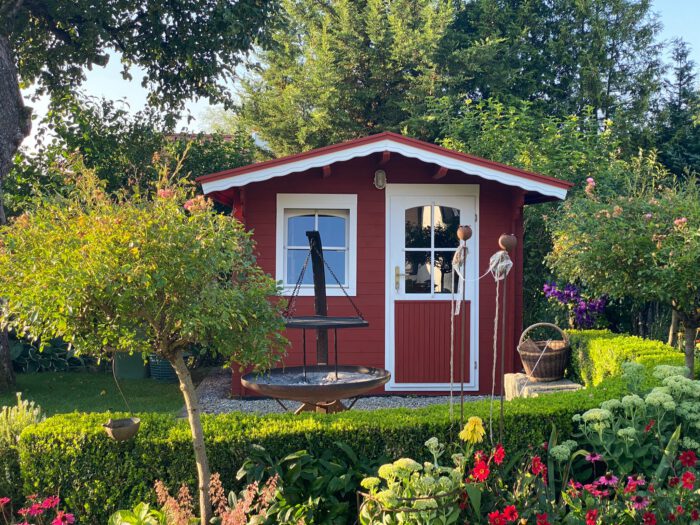
Want to paint your garden house, fence or shed in Falu red?
Recipe of the original Swedish red wood paint
These pigments, with beautiful red, yellow and black colors, were an obvious perfect ingredient for paint. To make the paint thicker and more spreadable other ingredients were added, such as wheat and/or rye flour. Water and some other stuff from the mine were also added (iron sulfate powder), and subsequently boiled and mixed. And to be honest, back in the days they used to throw in a bit of everything in the paint, as long as it was cheap and sticky.
There are many secrets among paint manufacturers. Some add very small amounts of soap to serve as an emulsifier. Others added brighteners or antibacterial substances. Linseed oil was added as well, because the original paint rinsed off very quicky. This is still the basic recipe of slamfärg. The pigment still contains 0.24 % lead and therefore Moose Färg wood stain has specially selected lead-free pigments.
Ingrediënts:
10 liters of water
400 grams of iron sulphate
500-600 grams of finely ground rye or wheat flour
1.6 kg of red earth pigment (red iron oxide, Fe2O3))
possibly: linseed oil and soap
Boil the water. Add the iron sulphate and let it dissolve for about 15 minutes while stirring well. Mix the flour with a little water and add it to the boiling mixture while stirring. Allow it to simmer for about 1 hour until the flour has become starch, and give it another good stir. Add the pigment, and let it simmer for 30 minutes.
Swedish red anecdotes
There are many myths and legends around this Swedish red wood stain. Legend has it that a farmer was amazed by the red colored horns of his buck. He decided to follow the goat and discovered in the woods that the goat was scraping the ground with its horns. Where the buck did that the earth was red. The farmer started digging and discovered a rich ore vein, which was the start of the copper industry in Falun.
Falun Red has a strong preservative effect on timber, but it apparently has the same effect on bodies… In 1719, the corpse of a man known as was discovered in the mine. The man, who goes by the name ‘Fed Meds’ seemed to have died recently but chemical compounds had preserved his body for more than 40 years.
Do you want to order Falu red wood paint?
Would you like additional, personal advice?
We are happy to help. Send an e-mail or call +31(0) 6 55 333 165. Watch our Instruction Video for more information. Apply here for a free color-card.


